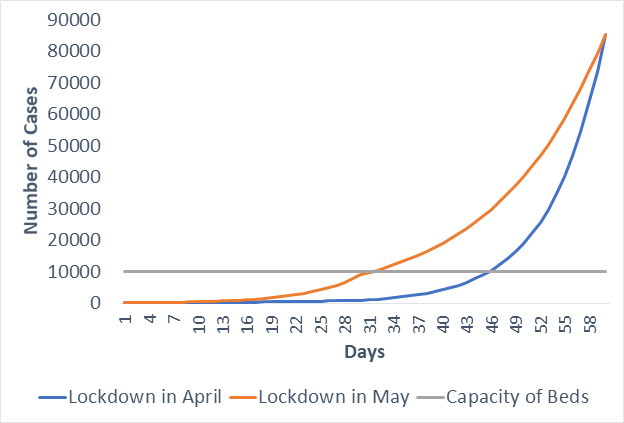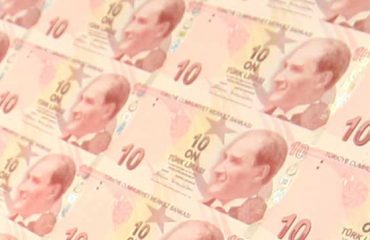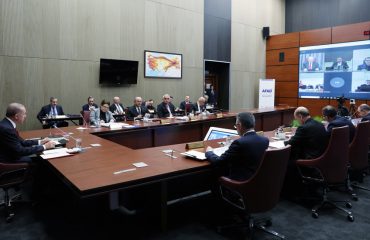

We all know that Covid-19 is a humanitarian problem, and containing the pandemic as soon as possible is an urgent obligation to save human lives.
From an economic perspective, the total cost of containing the pandemic immediately is less than that of isolation policies that are put into delayed practice.
The economics profession unanimously agrees that the prerequisite for economic recovery is the elimination of the virus. Former Federal Reserve Chairman Bernanke noted in late March that “Nothing will work if health issues aren’t resolved”, sending a clear message to governments. Even if you have the central bank that prints the global reserve currency, even if your central bank reassures the markets that there will be no limits on the amount of liquidity that can be injected to the system, and even if the rest of the world wants to hold your currency at a time of panic and stress; unless you contain the virus, economic confidence will not return, businesses will not open and people will not return to their normal lives or maintain their usual patterns of consumption.
Health first, economy next
How will the pandemic be taken under control and how will life return to normal? Nobody considers the policy adopted by the UK at the early stages of the crisis as a viable policy alternative anymore. The UK considered a hands off approach and avoided full lockdown in the beginning. The idea was to let the virus take its course and die off on its own. While this could be the cheapest and fastest solution from an economic standpoint, the humanitarian dimension of the problem quickly proved that this is not simply a cost minimization problem. The rapid increase in the death toll caused the British government to step back and consider full lockdown.
If voluntary isolation is not an effective means to contain the pandemic, we are left with two options. Either consider an immediate full lockdown before things get out of control, or be forced to consider a full lockdown at a later stage after the pandemic deepens, as in the UK or Italy.
Based on our research with a group of economists, we want to highlight that the costs of immediate lockdown are less than a delayed lockdown. I hope to share the numbers soon, when they are finalized. Until then, let me explain the framework that we consider in our analysis.
We compare the costs of a full one-month lockdown in April with the costs of a one-month lockdown in May. Our goal is to find out which alternative presents lower economic costs.
Two scenarios and costs
We assume that the loss of production and the consequent transfer payments to the affected groups remain the same under both scenarios. Nevertheless, there are certain items for which the waiting time increases the economic toll significantly. What are these items?
1- Health expenditures: assuming that the pandemic continues to spread exponentially, a full lockdown in April would decrease the average number of people who would be infected.

The blue line in the figure illustrates the total number of cases under a full lockdown in April, while the orange line shows the corresponding numbers under a lockdown in May, given certain assumptions. The gray line represents the capacity of beds in intensive care units. We observe that a full lockdown that comes one month earlier delays the point where the hospitals reach full capacity. Furthermore, there is a decline in the average number of patients as of May.
As a result, an early lockdown not only reduces health expenditures per capita but it also increases the chances of recovery by delaying the day when ICUs reach full capacity. Furthermore, because more research results become available over time, slowing down the spread of the virus would allow us to improve our medical equipment and provide an opportunity to develop more effective and cheaper ways to treat the disease.
To sum up, a full lockdown in April rather than May is expected to significantly reduce the health related expenditures in May.
2- Decline in supply: The pandemic affects the economy from the supply side as well as the demand side, and these two effects feed into each other. The supply side primarily affects the services sector and exports. The companies that stop production observe an immediate decline in their revenues, which prevents them from paying back their debts. The liquidity needs cause the problem to spread to the broader economy, and also causes bankruptcies and an extensive decline in employment.
The further a full lockdown and accompanying stimulus package are delayed, the slower the economic recovery and the higher the number bankruptcies will be. Just as a drowning person needs immediate help or else her organs start to fail, the economy needs immediate help before the companies start to fail. As more companies fail and people lose their jobs, there will be a larger decline in our production capacity.
3- Decline in demand: the decline in demand comes through two channels: on the one hand there are those people who lose their jobs due to interruptions in the supply chain. In turn, these people will reduce their consumption due to a decline in their incomes. On the other hand, there are those people who stay home due to isolation and cannot continue their old consumption habits.
If a full lockdown in April is not implemented and income transfers to the effected groups are not provided, there will be more insolvent companies and more unemployed people by the time we reach May, which will inevitably cause a larger reduction in demand.
4- Tourism: we still do not know how long the virus will last nor how fast it will spread. Some experts argue that this may take many more months and we should not expect much in terms of tourism in the summer of 2020. Others are more optimistic and argue that there may be a fast normalization in a few months, particularly as the weather warms up.
If we follow the optimistic scenario, the containment of the pandemic with a full lockdown in April may give us a chance to return to normal during the peak summer season and enable the inflow of tourists. If we delay the lockdown to May, it may risk the tourism revenue in that month as well as consequent months. The sooner we reach the peak of the pandemic, the sooner people will be able leave their homes, and the sooner tourism will recover, which is a significant source of foreign currency reserves.
To conclude, assuming that sooner or later we will need to implement a full lockdown, we argue that the sooner it is put into practice, the lower the economic costs and the faster the economic recovery will be.


